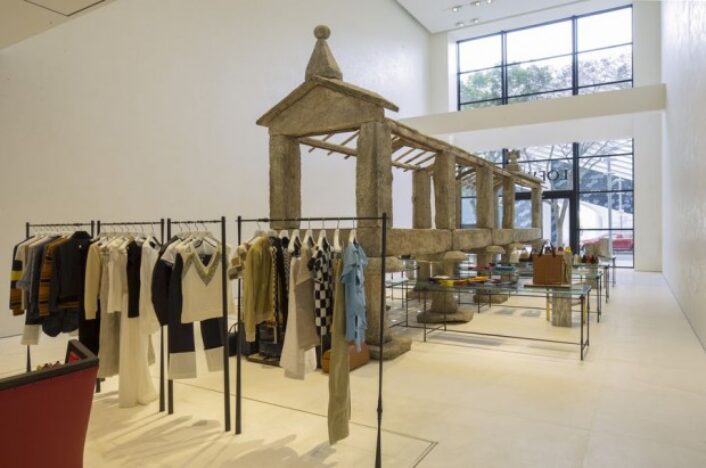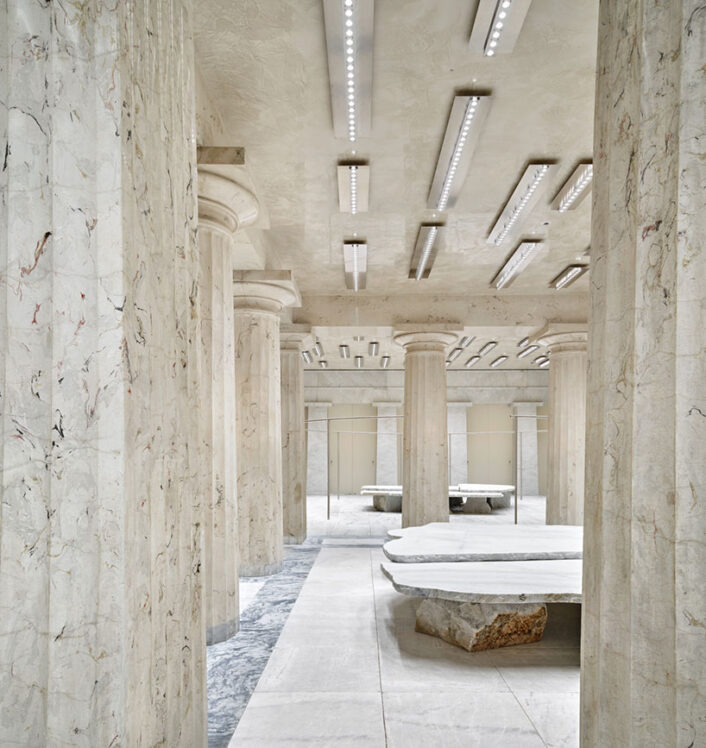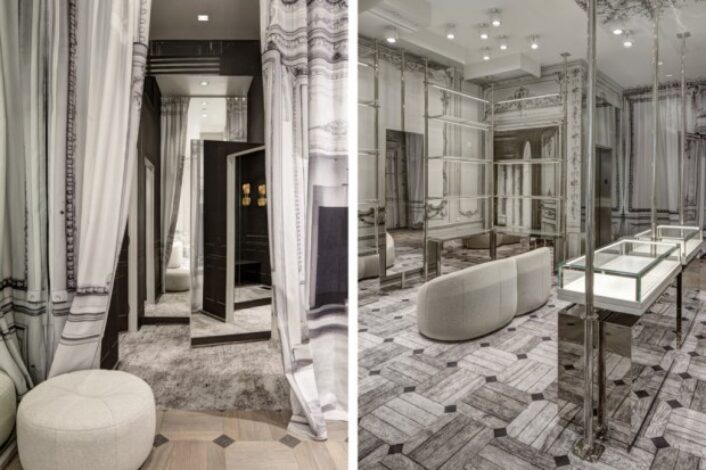The green onyx was sourced from Afghanistan.
Image courtesy of: Yellowtrace, photographed by: Danilo Scarpati
Architecture
Green onyx shines in Rome boutique
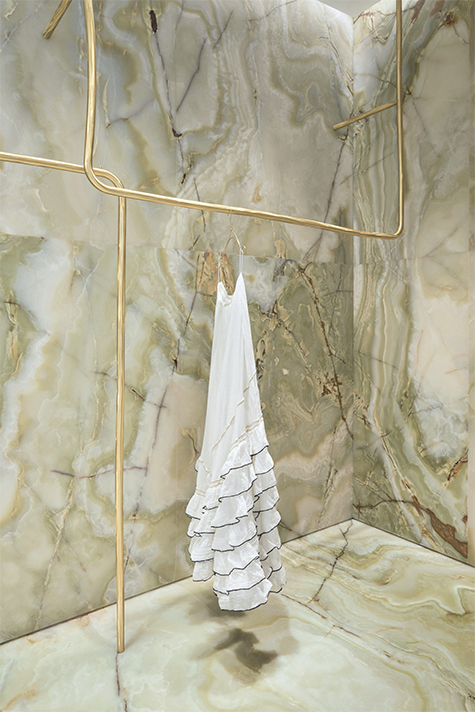
The Italian brand, Forte Forte, arrived in Rome to much acclaim. Located on Via Borgognona, an area that was once full of artists, the boutique is the brand’s eighth “outpost.” Inside, the innovative interior was designed by co-founder Giada Forte, and her partner and the brand’s creative director, Robert Vattilana.
Following the lead of other locations in Milan, Tokyo, Paris, and London, each specific locale (courtesy of Yellowtrace), “follows a different rhythm, telling unique and multifaceted stories yet with shared elements that tie them together into the enveloping narrative of Forte Forte.”
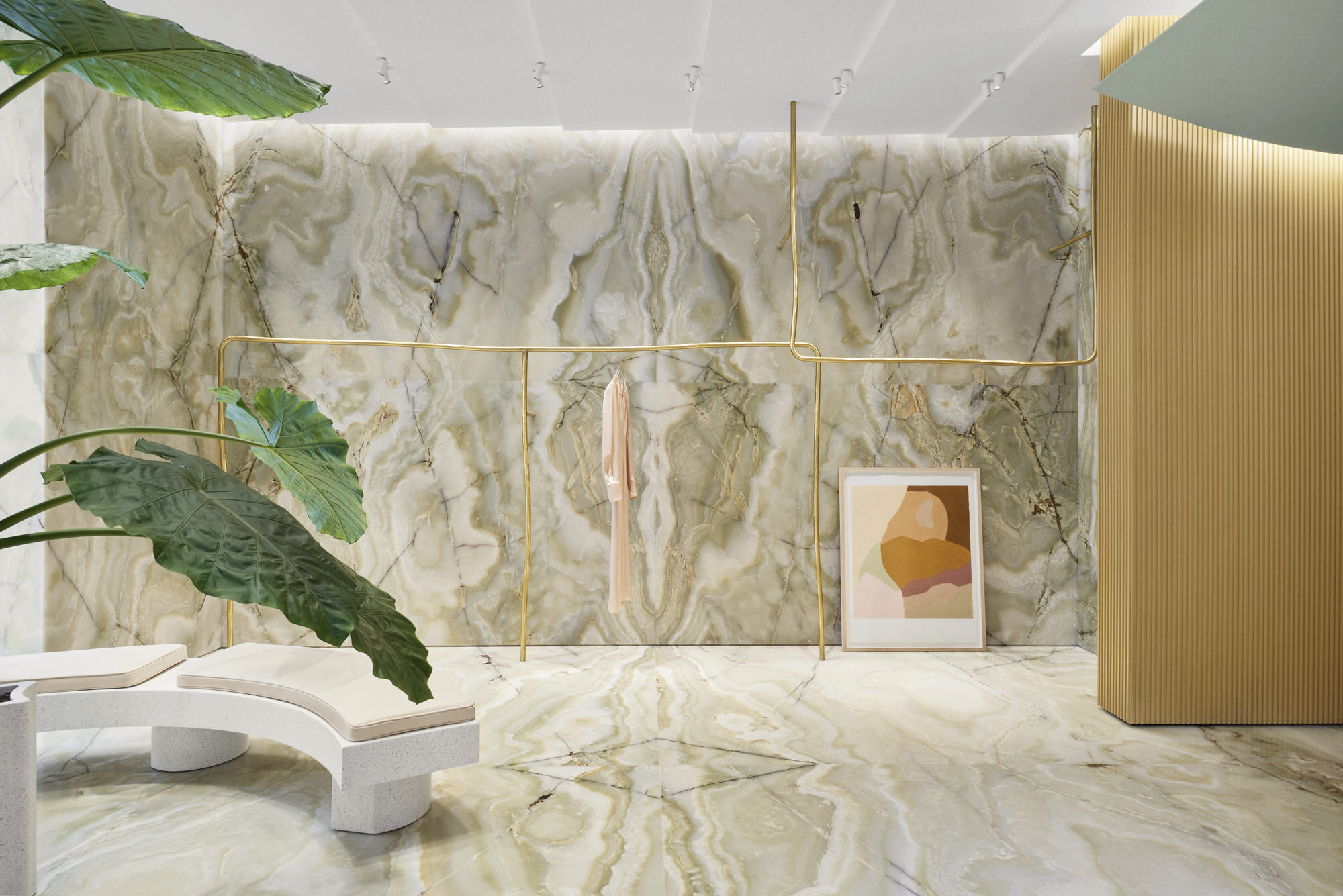
The sparse interiors allow for the onyx to be a focal point.
Image courtesy of: Yellowtrace, photographed by: Danilo Scarpati
The onyx was honed in large symmetrical cubes and the end-product is a matte surface that completely immerses the shop. The special material has a unique design that features elements of its thousand-year history in the loops of its marbling. This is caused because of the onyx’s particular mineral structure (courtesy of the brand’s website), “green onyx creates a total immersion in the store: it drowns the entire space, from floors to walls. This is actuality, not poetic language that is typical to descriptions of design. The feeling is that you are entering into an all-encompassing stone cube in the midst of the “Eternal City.”
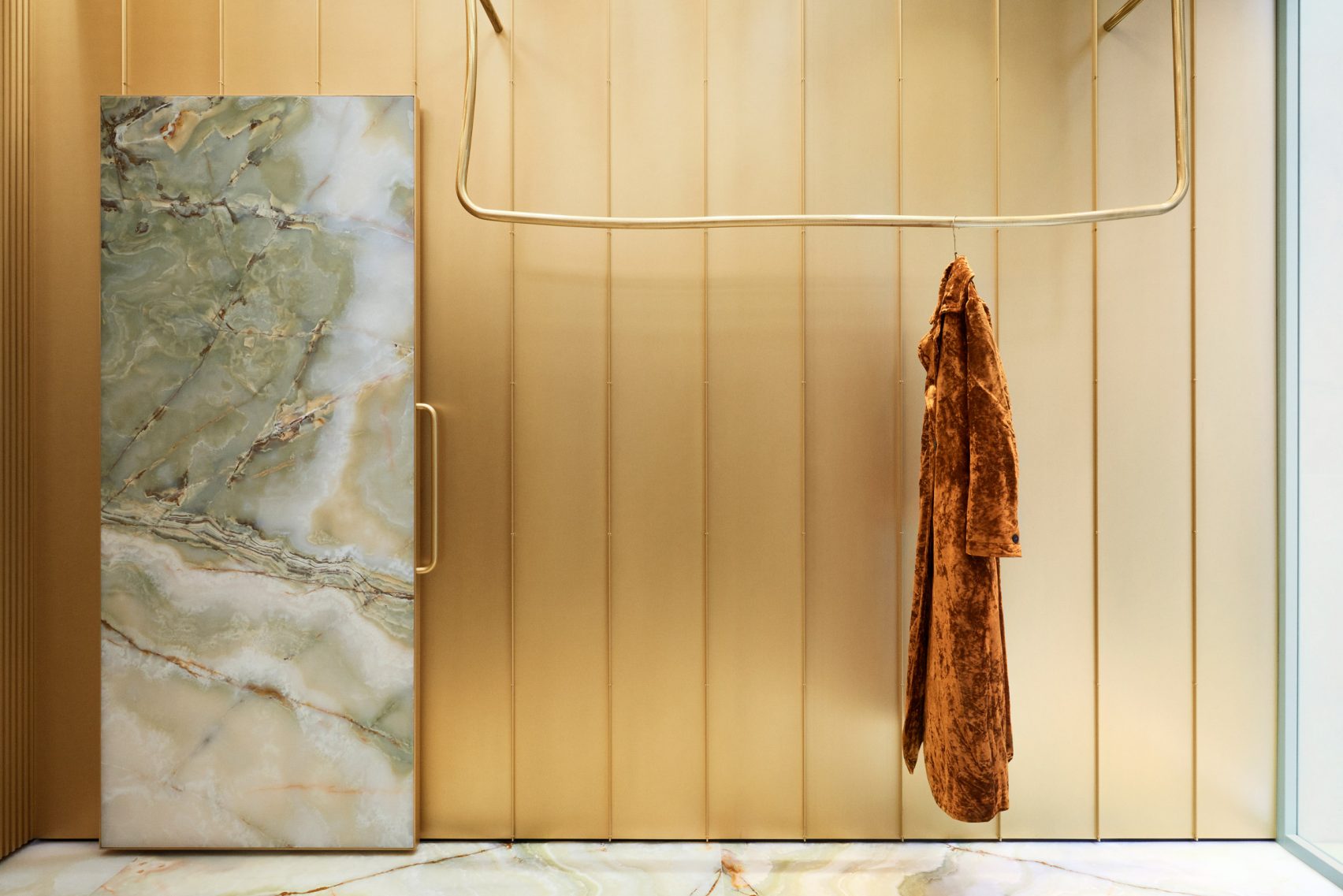
An onyx door sits within a brass wall.
Image courtesy of: Dezeen, photographed by: Danilo Scarpati
Forte’s idea was that “contrasts” become the boutique’s focal point in honor of Rome that is a “city of contracts.” As Forte says (courtesy of Stone Ideas), “The intention was to design the showroom with “focus on contrast,“ the documents say because: “In Rome contrast is always, and has always been, harmony.”
In addition, the unusual material maintains a long, impressive history… similar to the stone that is hundreds, if not one thousand, of years old. Since Rome is often thought of as a “city of travertine,” it was especially important to use this material. A specific type of limestone that is formed by mineral deposits from natural springs, the sedimentary stone is created over time by a rapid precipitation of calcite. When other minerals mix together with the calcite, beautiful swirls are produced, giving the travertine, or onyx in this case, a particular character. Specifically, the green onyx’s stunning transparency when set against light gives the store a one-of-a-kind look. Forte explained (courtesy of Dezeen), “Thanks to the particular material structure, [the onyx] dematerializes in contact with the light in nuanced transparency.”
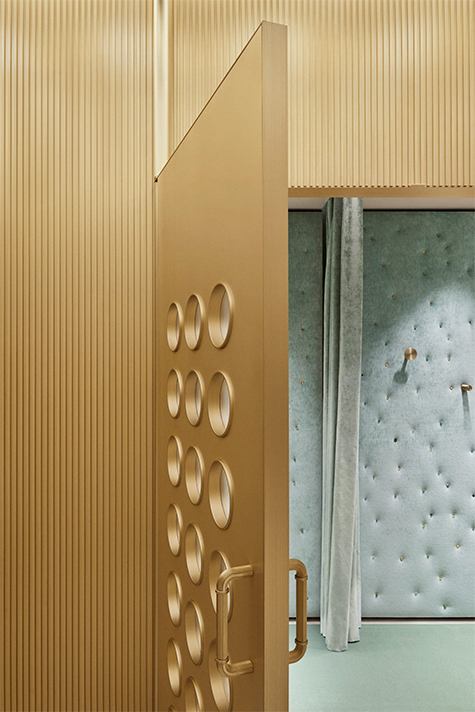
The plush interior of the fitting rooms.
Image courtesy of: Dezeen, photographed by: Danilo Scarpati
Using brass elements as the accent material beautifully compliments the onyx; in such, hangers, mirrors, shelving, and clothing rails were all made from brass. Towards the store’s entrance, the ceilings are finished with white overlapping panels. Further inside, a white plaster ceiling was punctured by porthole lighting.
Portholes were designed into the brass doors of the dressing rooms which are a sage-green velvet. In front of the dressing rooms, there is a circular bench that wraps around a large vase that is usually filled with enormous leaves. At the rear of the store, the back wall is covered with polished brass panels. Behind there is a brass-framed onyx door that leads to the warehouse where many green filing cabinets reside on rails.
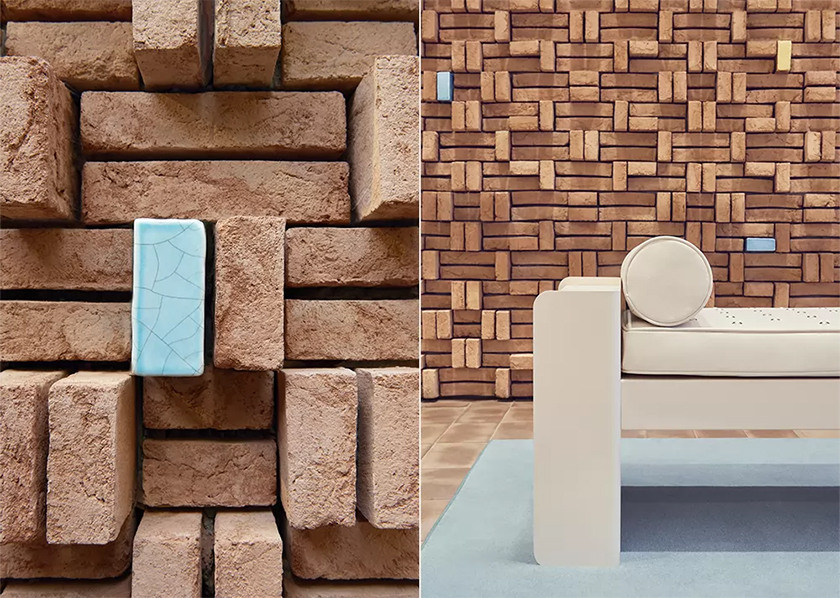
Inside Forte Forte’s London boutique, red clay bricks were used for the majority of the ground floor of the two-story boutique. In some areas, the bricks are laid flat and in other areas, the bricks are stacked horizontally and vertically creating a sort of pixelated mirage.
Image courtesy of: Forte Forte
As a company that is not a stranger to materials, Forte Forte’s London boutique is different and similar all at once. In London, clay bricks, onyx, and plush velvet are used to create a unique feeling inside the two-story boutique. Also designed by Vattilan, the idea was to create (courtesy of Dezeen), “The feeling is to enter a place that keeps moving instead of being static, run by a sense of surprise and discovery: a fluid, ever-changing container.”
Similar to Forte Forte’s Rome interior, brass is used for the boutique’s fixtures and cushioned, blue velvet walls, to create a “boudoir” experience. Forte and Vattilan describe their intention, “The feeling is to enter a place that keeps moving instead of being static, run by a sense of surprise and discovery: a fluid, ever-changing container.” Mission achieved!
